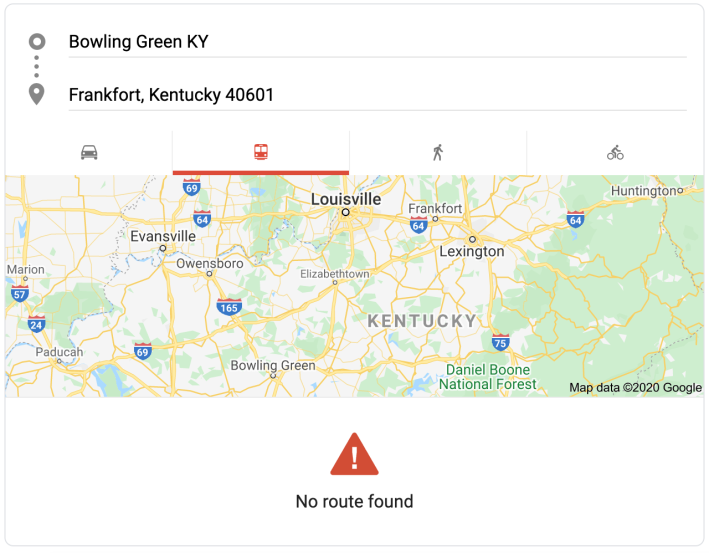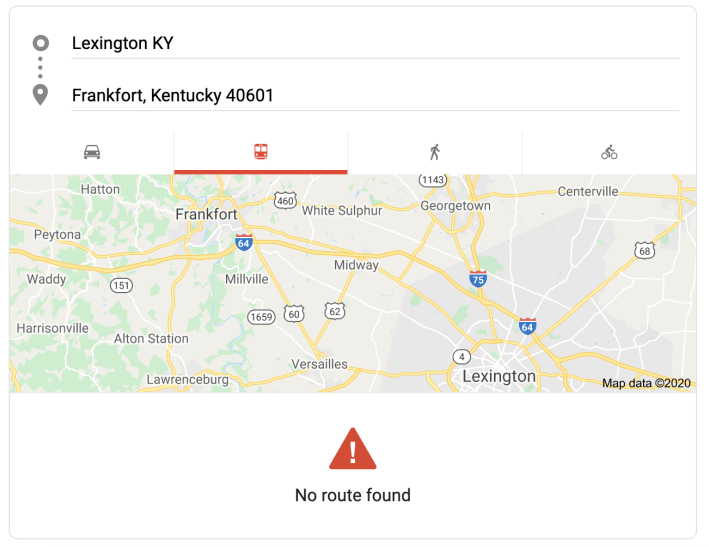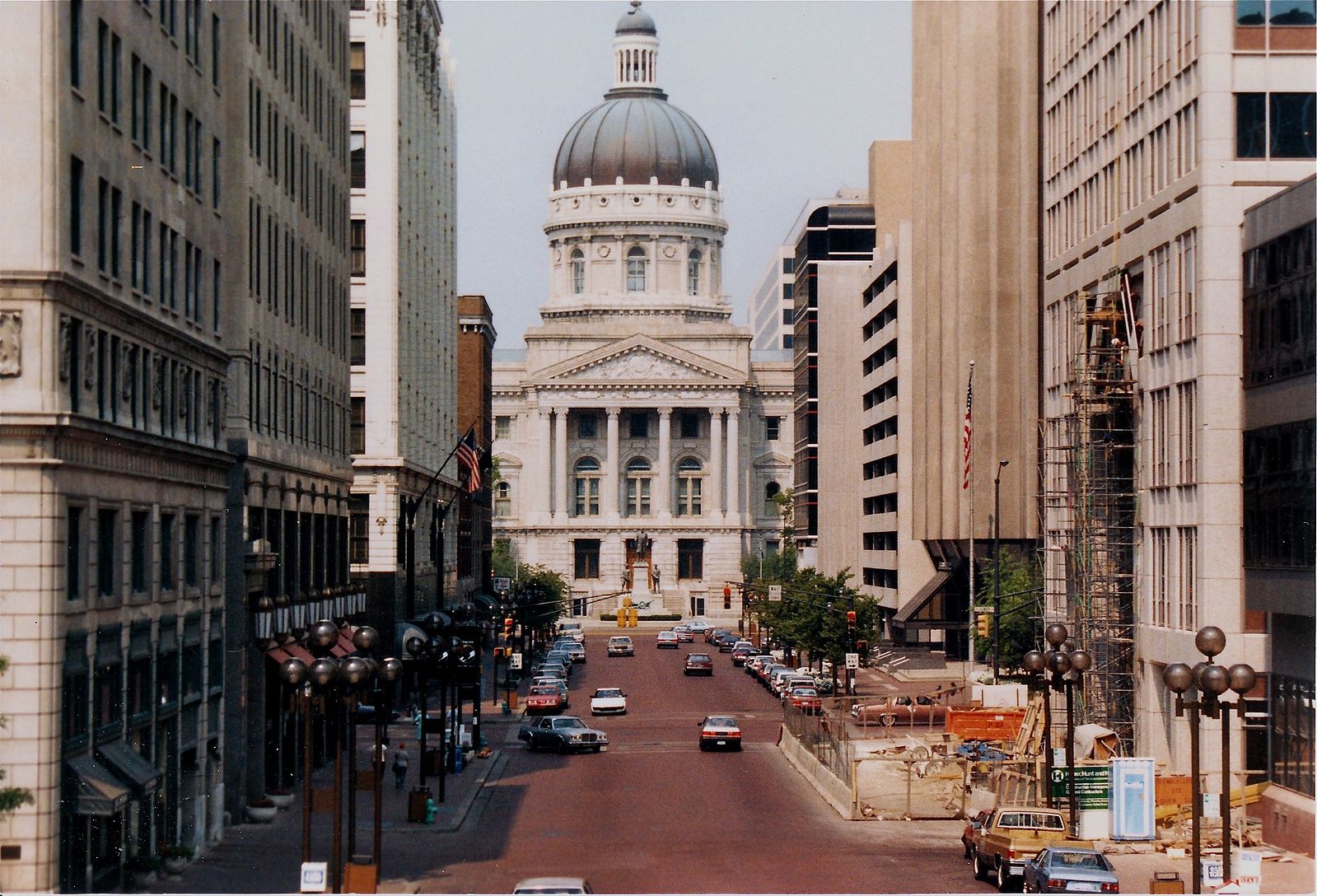A state where not all citizens can access their legislators can't truly call itself a democracy — and too many of our state capitals are failing their constituents, simply because they aren't accessible to people who don't drive.
Annapolis, MD is one of them. Greater Greater Washington posted a great deep dive a couple weeks ago on why the home of the Maryland legislature is so bafflingly difficult to get to by train or bus. There's no train network within Naptown's borders, and the Maryland Transportation Administration runs just a handful of intracity bus routes from the capital to other population hubs across the state.
That has big implications for the public process, said government staffer Olivia Delaplaine in an interview for GG Wash. She said advocacy groups whose members didn't own private cars sometimes struggled to reach the capitol building and lobby for their initiatives, unless they gathered the funds to rent a van or found a friend to their cause to drive them.
"It puts a huge dent in their own ability to successfully advocate for their own priorities," Delaplaine said.
Of course, Annapolis isn't the only place where driving a car is a functional prerequisite for getting face time with your representatives during the legislative session. Here are just a few of the capital cities that need to address their public transit problems if they want truly serve their people:
1. Frankfort, Kentucky
Most of the cities on this list are at least kind of accessible by public transportation, albeit usually by an arduous, multimodal trek that requires carless constituents to devote far more effort to getting face time with their legislators than their car-owning counterparts. The capital of Kentucky, though, has the ignominious distinction of being completely unreachable without a car.
Seriously, check out what happens if you ask Google how to get there via bus or train from any of the state's three largest population centers:



Frankfort is the fourth least populous state capital in the nation at just over 27,000 residents, so no one expects a robust rail service 365 days a year. Still, couldn't there be some bus service, at least while the legislature's in session?
2. Little Rock, Arkansas
Frankfort can be forgiven, somewhat, for not building an impressive public transit machine surrounding its underpopulated capital; Little Rock doesn't have the same excuse. The Arkansas capital is actually the most populous city in the Natural State — and if you want to get there from the second most constituent-rich city, well...hope you've got 17 hours to kill!
That's right: to get from Fayetteville, the home of the University of Arkansas, to the capitol, you'll need to take six buses, including a totally-out-of the-way jaunt due south to pick up a Greyhound at the Texas border. It's a great premise for a country song but not one for a strong democracy.
And in case you're wondering, driving directly from Fayetteville to Little Rock only takes 2 hours and 45 minutes.
3. Cheyenne, Wyoming
It might feel like a cheap dunk to point out that you can't reach the capital of Wyoming without a Ford Bronco (or a literal bronco). Residents of the Cowboy State drive more miles per capita than anyone else, and Wyoming also has the second highest number of cars per capita of any state in the country behind Montana. But what lands Cheyenne on this list is a single fact that demonstrates just how uniquely car-dependent the city is: if you want to get to the capital from the nearest town without a car, you still have to hoof it.
The small town of Altvan is a mere 7.7 miles away from the Wyoming state house, but the city's public transportation network (yes, it has one) doesn't extend that far. You could walk or cycle there, theoretically, but most of the way is on a rural road with no sidewalk, much less a bike lane. Needless to say, Cheyenne isn't connected by intracity bus routes to any other major cities in the state, either.
4. Augusta, Maine
Lest you think that the South and the Mountain West are home to the only states that like to maroon their capitals in the middle of nowhere and cut them off from anyone without a car, let's talk about Maine.
Augusta was chosen as the capital of the Pine Tree state because it was roughly equidistant between Portland and Bangor, who both wanted the title. But after the advent of the automobile, the state didn't bother to maintain car-free connections between those cities and the legislative seat. There are no buses, no trains, no nothing.
Yes, you can grab an intracity bus between the coastal cities in Maine where people like to vacation. But if you want to access your senator in person without a car, good luck.
5. Indianapolis, Indiana
The leaders of Midwestern states are often surprisingly well connected to constituents in the cities they serve by transit; Columbus, Ohio, Oklahoma City, Springfield, Ill. and nearly every other heartland capital has direct bus or train lines to the state's largest population centers.
But there's an exception — and no surprise, it's the home of the Indy 500.
One of the most notably hard cities to live in if you want easy access to the Indiana state capitol is Fort Wayne, the Hoosier state's second most populous region. Take a bus, and you're looking at a seven hour trip — and you have to swing way east and change buses in Dayton, Ohio on the way, and then retrace your route back west.
Yep: in order for carless Fort Wayners to get face time at the Indiana state house, they've gotta visit the Buckeye State first. At least they can commiserate with the fine people of Dayton about their Michigan sports rivalries on their layover?
Honorable Mention: Albany, New York
No, New York's capital isn't nearly as hard to reach without a car as the other cities on this list. Still, one would think that the state that's home to the American city with the single highest public transit rate per capita would have a state legislature you could access easily without a privately owned vehicle.
So if you're traveling to the Empire State's ornate capitol from NYC, the Amtrak is great ... until you reach the final stop. That's because the "Albany" station isn't actually in Albany — it's in the neighboring town of Rensselaer on the opposite side of the Hudson River.
There's a bus, but it's anything but direct. Or you could hold out for the $25-million aerial gondola that's been languishing in environmental review since 2018.
Still, it'd be nice if most New Yorkers didn't have to brave land and sea to bend the ear of their senators — or at least get some non-autocentric infrastructure to take them a little closer to the capitol.
It'd be nice if every American had the same privilege, too.






